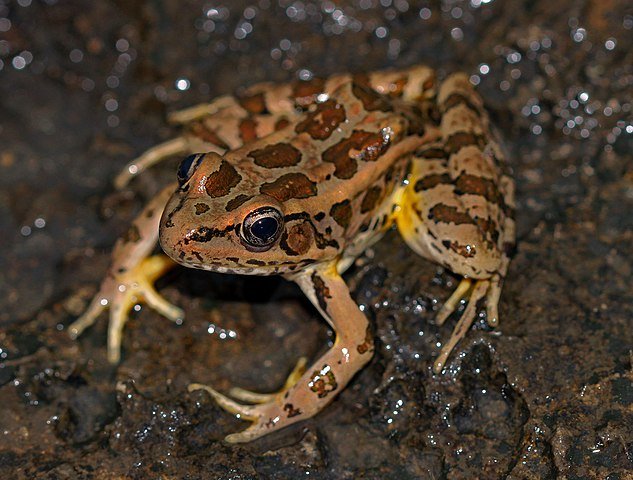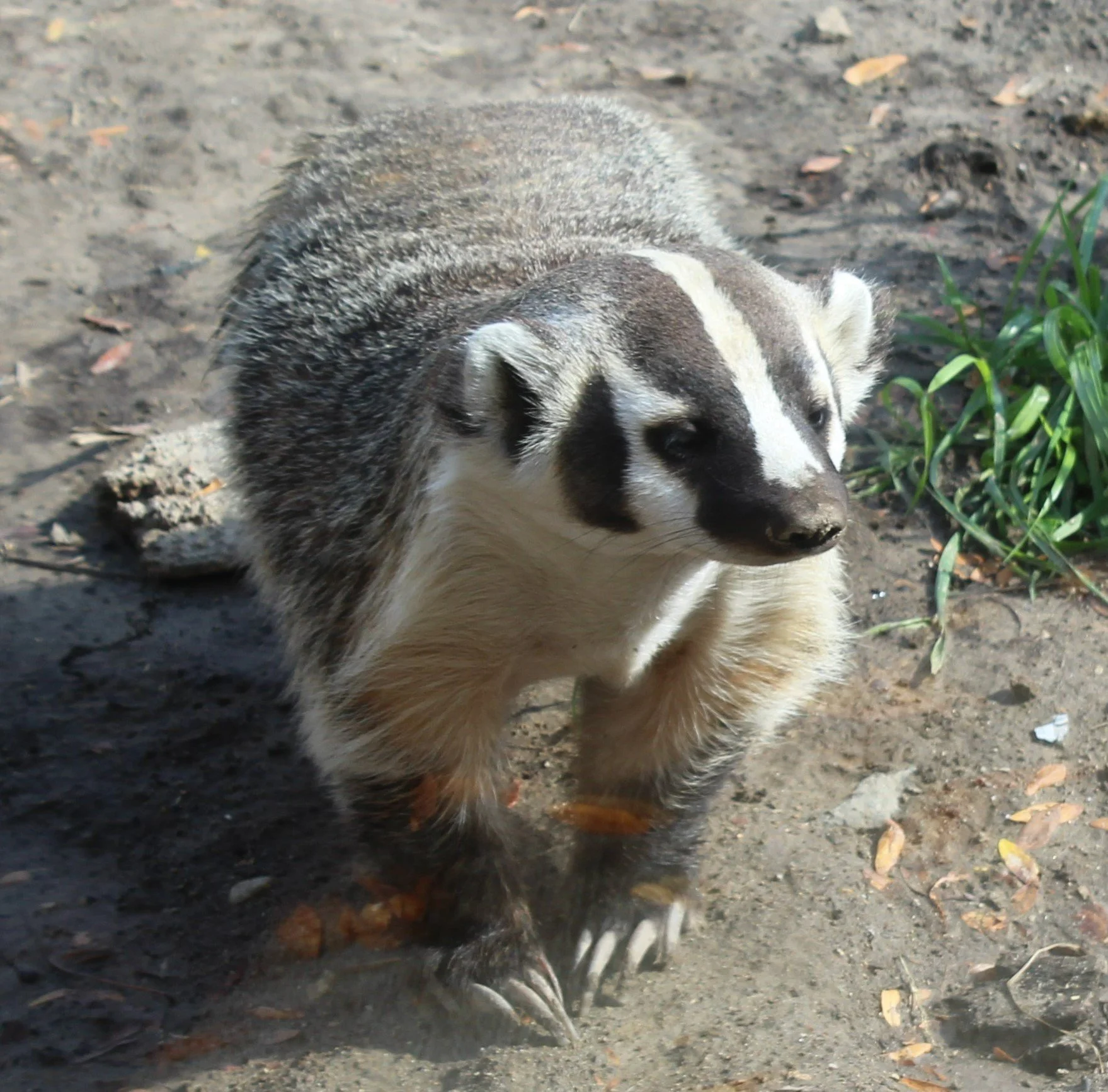Wisconsin is home to 12 frog species, many of which can be found throughout the state as well as in people’s backyards. This may lead homeowners and frog enthusiasts to wonder which Wisconsin species are poisonous.
The vast majority of the frog species found in Wisconsin are not poisonous. However, Pickerel frogs have skin secretions that can cause mild reactions in humans, and American Toads are highly toxic to pets.
Let’s have a look at the different Wisconsin frog species, their levels of toxicity, and what to do if you have them in your yard.
Poisonous Frogs in Wisconsin
Here is a table of the frog and toad species that can be found in Wisconsin, as well as more information as to which species are poisonous or not:
Frog Species Poisonous
Pickerel Frog Yes
American Toad Yes
Blanchard's Cricket Frog No
Boreal Chorus Frog No
Cope's Gray Treefrog No
Gray Tree Frog No
Spring Peeper No
American Bullfrog No
Northern Leopard Frog No
Mink Frog No
Wood Frog No
Let’s have a closer look at risks related to the two toxic species found in Wisconsin, Pickerel Frogs, and American Toads.
Pickerel Frogs are Poisonous
Pickerel Frogs are aquatic frogs with square-spotted patterns on their backs. Pickerel Frogs are generally shades of green or brown depending on their environment. The largest population of this species is located in Southwestern Wisconsin, though smaller groups of Pickerel Frogs can be found in various places throughout the state.
Pickerel Frogs are one of the only poisonous frogs native to North America and may secrete a toxin with a foul smell that can irritate predators' skin or mouth if ingested.
Therefore, if a Pickerel Frog’s secretions touches your skin or enters your bloodstream through your mouth, eyes, nose, or a cut, you may experience irritations.
However, pickerel frogs are not known to be highly toxic to humans or pets. You should immediately call your vet for further instructions.
In most cases, washing the point of contact with soap and water, or quickly bringing your pet to the vet in case of ingestion can help resolve the issue with little harm done.
Keep in mind that, just like any other frog, pickerel frogs can carry salmonella on their skin, which could cause even more harm to you or your pet in case of ingestion. The best way to avoid these problems is to keep your pets away from these frogs, to not touch them, or to wear gloves and handle them with care if necessary.
American Toads are Poisonous
Just like any other toad species, American toads can secrete toxins through the large parotid glands on their backs. Yet American Toads remain fairly small compared to other large, highly toxic species like Cane Toads (not found in Wisconsin).
Ingesting the toxins of American Toads can generally cause intoxication, gastrointestinal issues, and abdominal discomfort in humans. However, American Toads toxins can be fatal to pets.
Pets like cats and dogs may play with American Toads out of curiosity. This can lead to unintentional ingestion, intoxication, excessive salivation, seizures, vomiting, or cardiac arrhythmia.
If you suspect your pet licked or ingested an American Toad, call your vet right away. Next, flush your pet’s mouth with water. You can also call the Animal Poison Control Center in the US and Canada at (888) 426-4435.
Ironically, raccoons do eat toads without discomfort. The intelligent raccoon flips the toad over and eats from the belly discarding the back skin which contains the highest level of toxins.
The Most Poisonous Frogs are Not in Wisconsin
Maybe you were worried about finding highly toxic frogs in your backyard. Although some species like Golden Poison Dart Frogs can secrete enough toxins to kill ten men. These frogs are not located in Wisconsin. The most toxic frogs on earth are mostly found in South America.
Check out this fabulous conversation I had with Daniella from toadsnfrogs.com!
The most toxic species located in the United States are Cane Toads which were introduced from South America in the 1930s to eliminate beetles that were eating cane crops. The plan backfired and the toads proliferated, feeding on native wildlife, and are now an invasive species in Florida. So these highly toxic toads are not of concern in Wisconsin.
Although the most toxic frogs in the world, and even in the US, are not located in Wisconsin, you may still be worried about your pets' and children’s health and safety. Let’s discuss some things you can do about frogs if you have them on your property.
What to do About Poisonous Frogs in Wisconsin
To be frank, the easiest thing to do about frogs is to leave them alone (they were there first )
But of course, if you have pets or children and are concerned about frogs or toads roaming your yard and possibly harming your family, intervention may be necessary.
Read our blog about Wisconsin Frogs.
What to do About Pickerel Frogs
Pickerel Frogs are aquatic frogs meaning they mostly live in water. They have a tendency to migrate during the year, moving from cold streams in the Spring to warmer waters in the Summer.
So unless you have a pond, lake, or calm body of freshwater in your yard, there are few chances you will have to deal with Pickerel Frogs. Since we have numerous water bodies and marshes in Wisconsin you may have concerns.
However, the pickerel frog is a species of ‘special concern’ in Wisconsin which means it is being monitored due to declining populations.
If you do have Pickerel Frogs in your area, keep pets and small children away from the water where they are located. Educate your children on how to safely interact with frogs by simply observing them, not touching them.
What to do About American Toads
American Toads are more common in urban areas because of the abundant presence of food. Toads burrow during the day and only come out at night to eat.
Therefore, keep a close eye on your pets when you let them out at night to do their business (for example for dogs), or avoid letting them out at night if possible (for example for cats).
Toads eat large amounts of garden pests such as snails, slugs, and beetles. They make great organic gardening pest control.
However, the best thing to do about American Toads is to ensure your yard does not naturally attract them.
American Toads are generally searching for insects at night, so anything that attracts bugs including garbage, bright lights, pet food, or compost may attract toads. Keep these things far away from where your pets or children play. You could also put up tight fencing that is at least 8 inches deep around your property to keep the toads out.
Neither species should be a problem during the Fall and Winter since they both brumate.
Overall, the vast majority of the frog species found in Wisconsin are harmless. The easiest way to avoid any problems with them is to enjoy them from a safe distance. Frogs are incredible allies in reducing the amount of pathogen-carrying insects like mosquitoes that thrive in the region because of the Great Lakes. So simply have fun watching them keep your environment clean, from a safe distance! :)
Guest Author. This article was contributed by Danielle, Master Herpetologist, and founder of toadsnfrogs.com, a site and YouTube Channel educating on frogs and how to respectfully interact with them in nature.









The sandhill crane is a large and magnificent bird that is found in wetlands in the central United States. They spend their breeding season in Wisconsin’s wetlands and are a common sight even in urban areas.
At one point Sandhill crane populations had dwindled so low they were near extinction. Aldo Leopold and other Wisconsin environmentalists were instrumental in publicizing their plight.
These birds are best known for their graceful dance-like movements, which they perform during courtship rituals and their very vocal conversations.